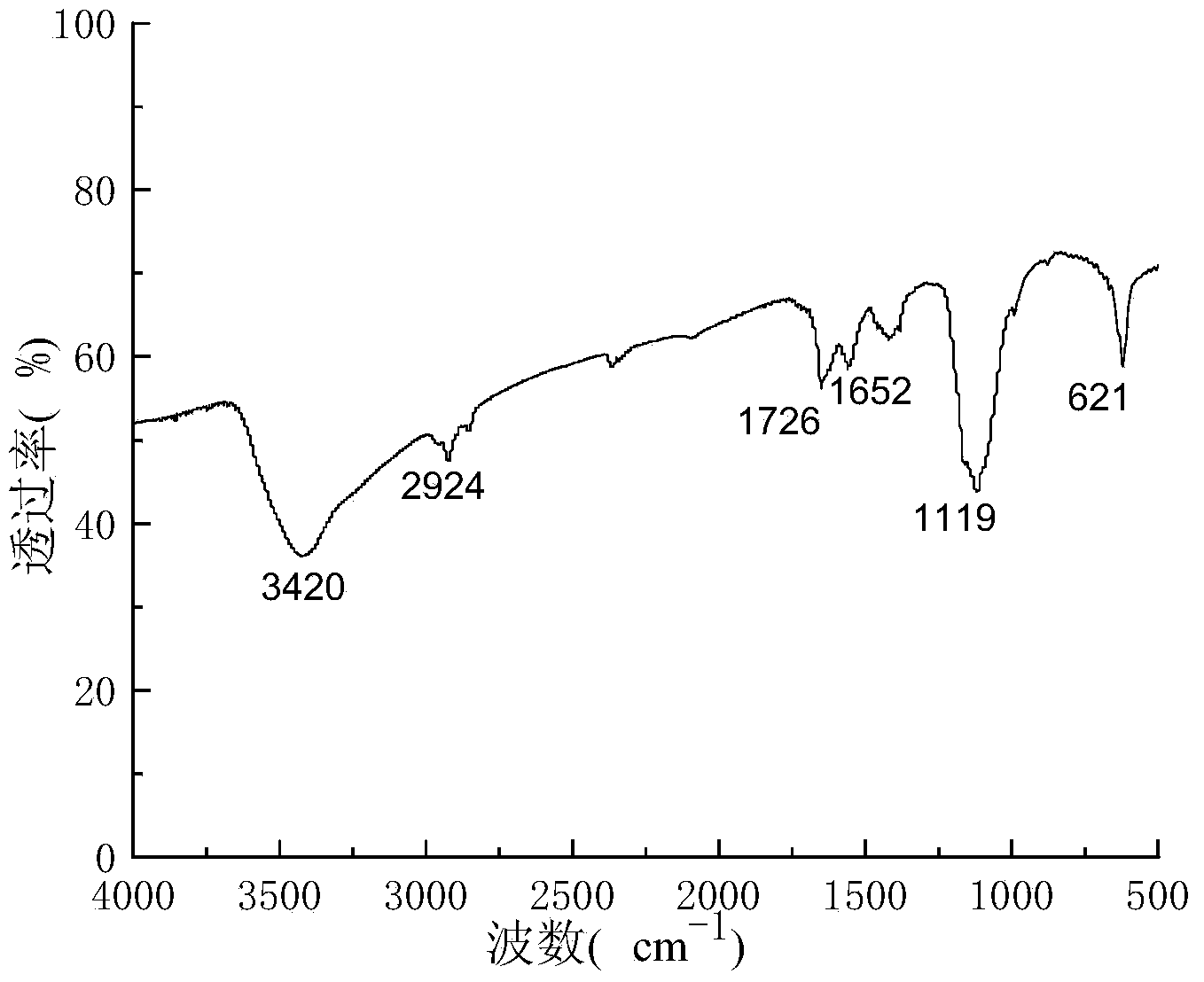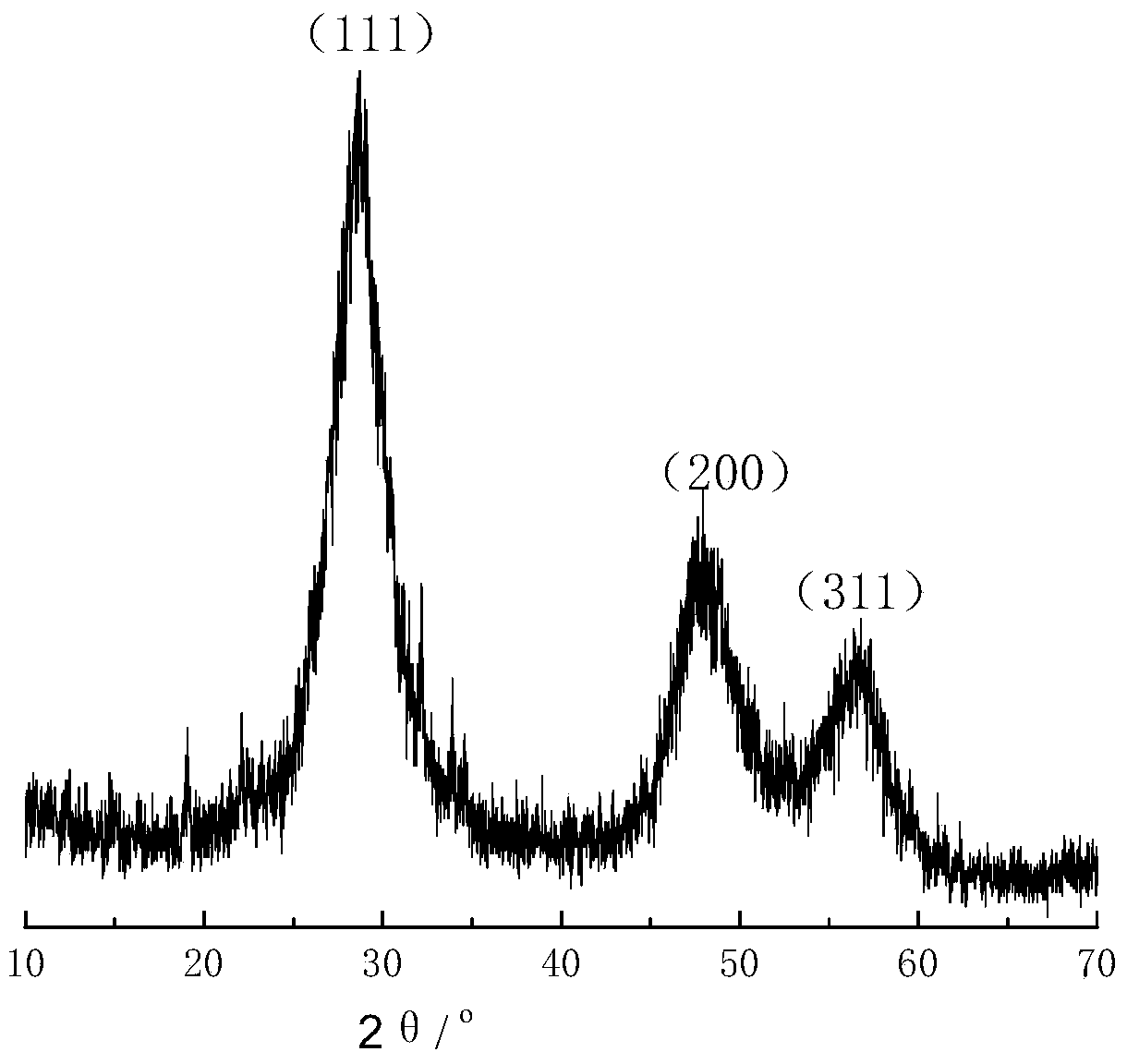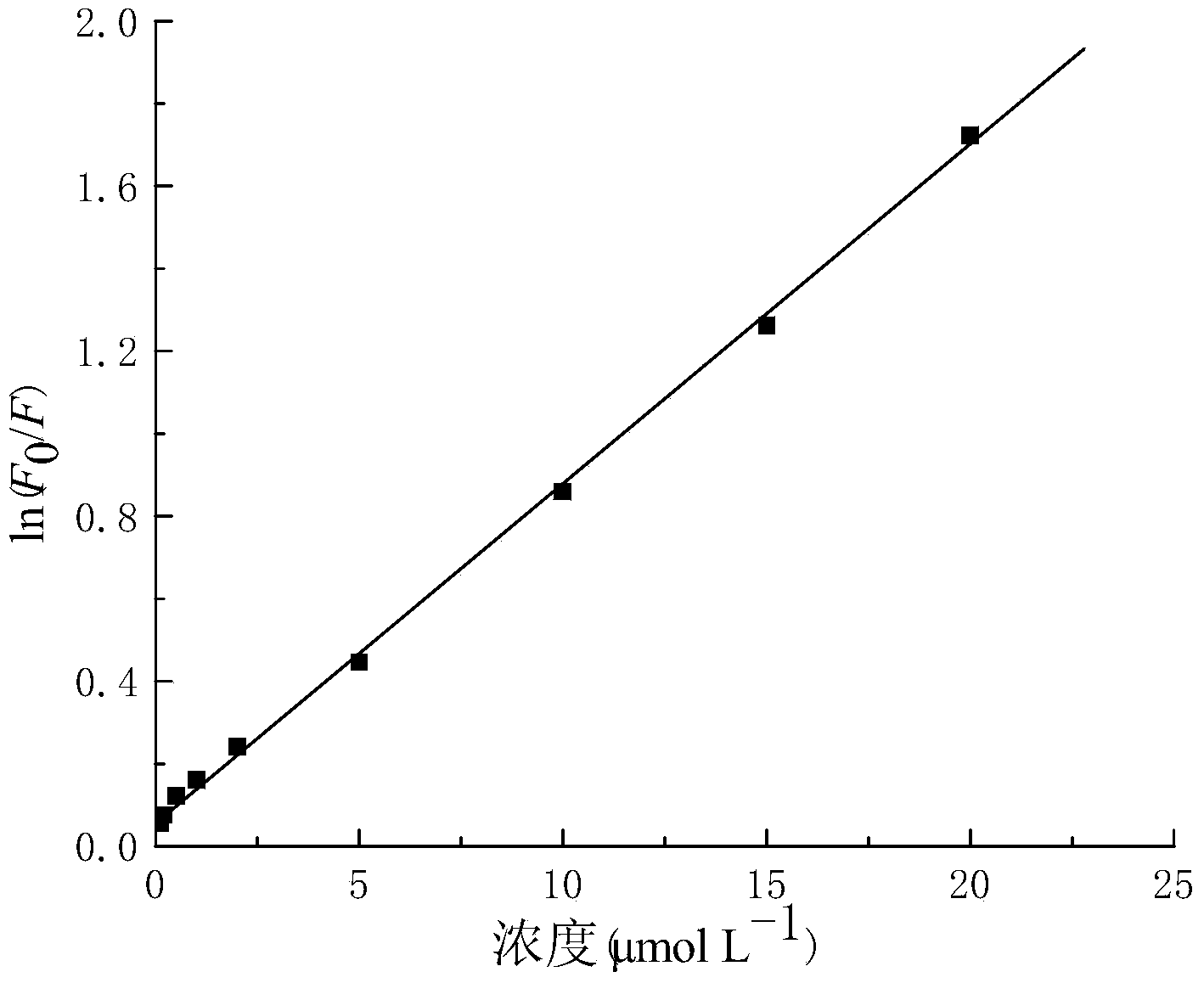Preparation method of molecular imprinting-fluorescent quantum dot dual-functional composite microsphere and application thereof in carbamates pesticide residue analysis
A technology of carbamate and fluorescent quantum dots, which is applied in the direction of fluorescence/phosphorescence, material excitation analysis, luminescent materials, etc., can solve the problems of high hazards to operators, consumption of organic solvents, cumbersome processing steps, etc., to reduce analysis costs, Wide applicability and improved analysis speed
- Summary
- Abstract
- Description
- Claims
- Application Information
AI Technical Summary
Problems solved by technology
Method used
Image
Examples
specific Embodiment approach 1
[0040] Specific implementation mode 1: This implementation mode is a method for preparing molecularly imprinted-fluorescent quantum dot bifunctional composite microspheres, which is specifically completed according to the following steps:
[0041]1. Synthesis of doped quantum dots ZnS:Mn: ① First, add manganese chloride, zinc sulfate and distilled water into the container, and react for 10min to 30min under nitrogen atmosphere and stirring speed of 300r / min to 400r / min , and then drop the sodium sulfide aqueous solution with a concentration of 2mmol / mL to 3mmol / mL into the container at a dropping speed of 30 drops / min to 50 drops / min, in a nitrogen atmosphere and a stirring speed of 300r / min to 400r React for 20-40 minutes under the condition of oleic acid, then add oleic acid, stir evenly to obtain a white emulsion; ②Use ethanol as solvent, wash the white emulsion centrifugally for 2-5 times to obtain oleic acid-modified doped Type quantum dots ZnS:Mn;
[0042] The mol ratio...
specific Embodiment approach 2
[0062] Specific embodiment two: the difference between this embodiment and specific embodiment one is: in step one (1) at first manganese chloride, zinc sulfate and distilled water are added in the container, under nitrogen atmosphere and stirring speed is 350r / min~400r / The reaction time is 15min to 25min under the condition of 1 min, and then the sodium sulfide aqueous solution with the concentration of 2.5mmol / mL to 3mmol / mL is added dropwise to the container at a rate of 35 drops / min to 45 drops / min. React with a stirring speed of 350r / min to 400r / min for 25min to 40min, then add oleic acid, and stir evenly to obtain a white emulsion. Other steps are the same as in the first embodiment.
specific Embodiment approach 3
[0063] Embodiment 3: The difference between this embodiment and Embodiment 1 or 2 is that the molar ratio of manganese chloride and zinc sulfate in Step 1. is 1:(12.5-13). Other steps are the same as those in Embodiment 1 or 2.
PUM
 Login to View More
Login to View More Abstract
Description
Claims
Application Information
 Login to View More
Login to View More - R&D
- Intellectual Property
- Life Sciences
- Materials
- Tech Scout
- Unparalleled Data Quality
- Higher Quality Content
- 60% Fewer Hallucinations
Browse by: Latest US Patents, China's latest patents, Technical Efficacy Thesaurus, Application Domain, Technology Topic, Popular Technical Reports.
© 2025 PatSnap. All rights reserved.Legal|Privacy policy|Modern Slavery Act Transparency Statement|Sitemap|About US| Contact US: help@patsnap.com



